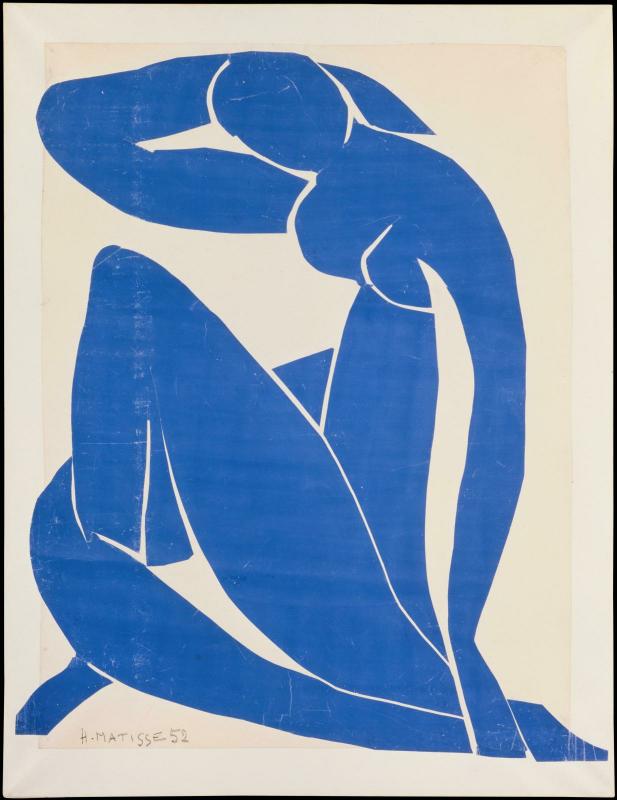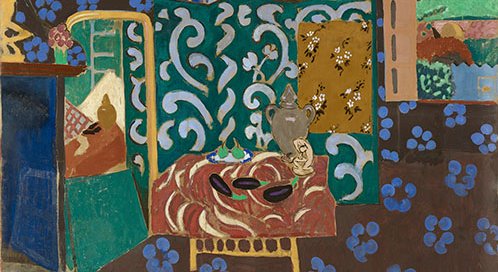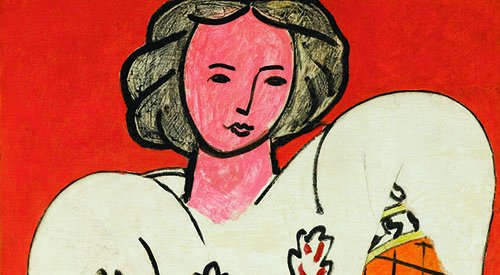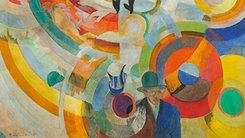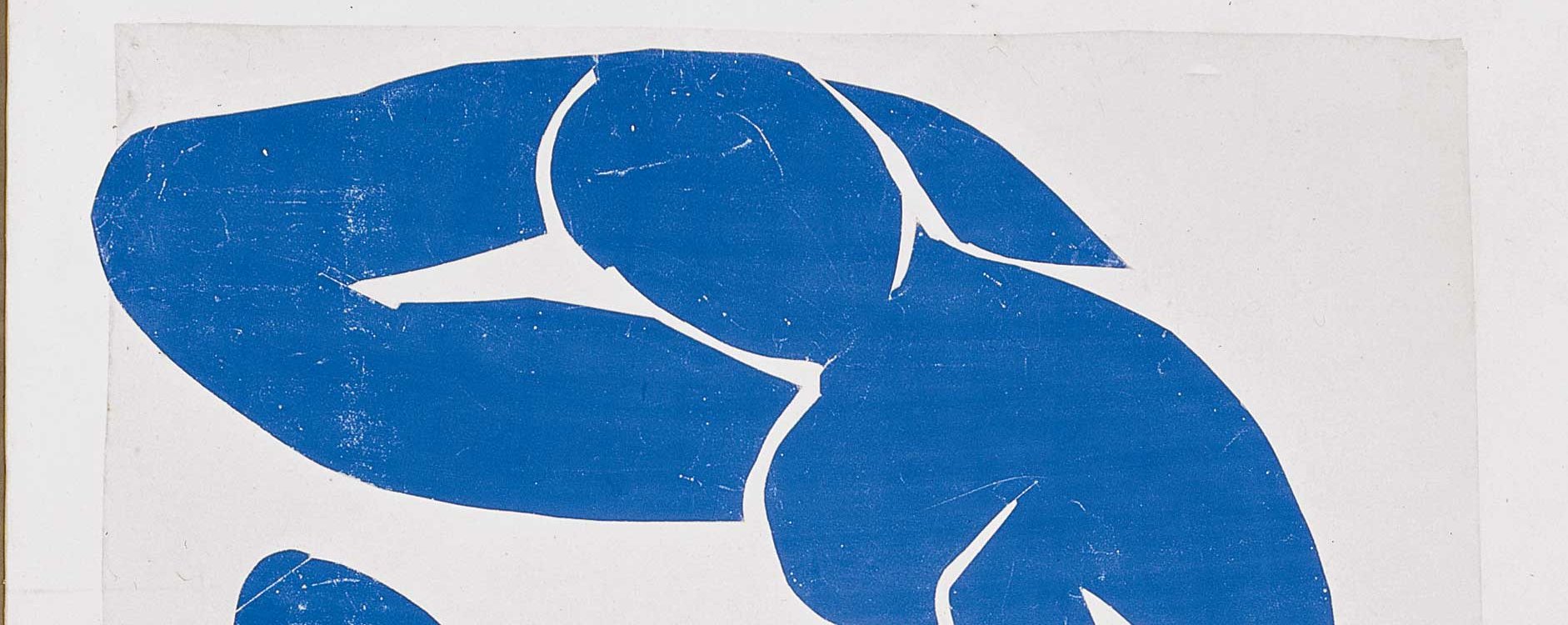
Focus on... "Blue Nude II" ("Nu bleu II") by Henri Matisse
The Blue Nude series (1952) revisits a seated nude pose that Matisse had explored extensively in both painting and sculpture, including Seated Nude, Olga (1910), Seated Nude, Arms Around the Right Leg (1918), and Venus with a Shell (particularly in its 1932 version). The last of these sculptures conveys a sense of immediacy and direct presence, evoking the familiar grandeur of certain idols, while also displaying a highly refined fusion of artistic languages to express a powerful vision. By 1932, Matisse had achieved such a mastery of form that he could confidently fragment the body—separating legs from torso, breaking the continuity of the neck—without fear of merely assembling disjointed ‘pieces’. The strength of the relationships between these elements held the composition together.
In the Blue Nudes, sculpted directly in colour, the concern is no longer about achieving a synthesis. Instead, the forms burst forth into space with unrelenting force. This is all the more striking because Matisse, who never disavowed his artistic principles, appears to contradict his own teachings. In 1908, addressing his students, he had insisted: “Joints—wrists, ankles, knees, and elbows—must be shown to support the limbs … It is better to emphasise the joint than to express it too weakly. Above all, one must be careful not to sever a limb at its articulation, but rather to integrate the joints into the limbs they belong to. Do not introduce voids that harm the overall composition, such as between the thumb and the adjacent fingers. Express form through relationships of mass and sweeping, interrelated lines.”
While composed of ‘pieces’, the Blue Nudes are not disjointed. Rather, they represent the culmination of Matisse’s lifelong exploration of the figure in space and, in a sense, the ultimate evolution of his sculptural practice.
Yet in the Blue Nudes, it is precisely the voids—the gaps between the cut-out shapes—that emphasise the articulations. These negative spaces define fullness, conveying a sense of volume (for example, the added depth of a bent leg passing in front of the thigh). Far from being disruptive, these voids inscribe the figure within its own space, in a unified light. While composed of ‘pieces’, the Blue Nudes are not disjointed. Rather, they represent the culmination of Matisse’s lifelong exploration of the figure in space and, in a sense, the ultimate evolution of his sculptural practice. No longer isolated against an abstract, neutral background (Reclining Nude I), nor enclosing a precisely defined portion of space (La Serpentine), the figure in Blue Nude is now infused with space itself. No longer confined, it breathes through and within its environment, becoming a conduit for movement and light, much like the windows that so often appear in Matisse’s paintings.
No longer confined, it breathes through and within its environment, becoming a conduit for movement and light, much like the windows that so often appear in Matisse’s paintings.
That same year, in 1952, Matisse created The Swimming Pool for his own pleasure. Spanning sixteen metres, this composition blends marine creatures with the fluid, weightless bodies of swimmers. These figures glide through a transparent medium—perhaps water, but also air and crystal—without any sense of separation. Inside and outside lose meaning, both for us as viewers and for these fluid bodies that appear alternately submerged, emerging, or floating. The interplay of blue on white, white on blue, constantly redefines the relationship between figure and space, making it both certain and uncertain at every moment. This dynamic absorption and reflection of space resonates within our own bodies, extending the sculptural essence (in Matisse’s unique sense) of the Blue Nudes indefinitely. ◼
Related articles
In the calendar
Henri Matisse, Nu bleu II 1952 (détail)
Papiers gouachés, découpés et collés sur papier marouflé sur toile, 103,8 X 86 cm
© Centre Pompidou / Dist. GrandPalaisRmn
